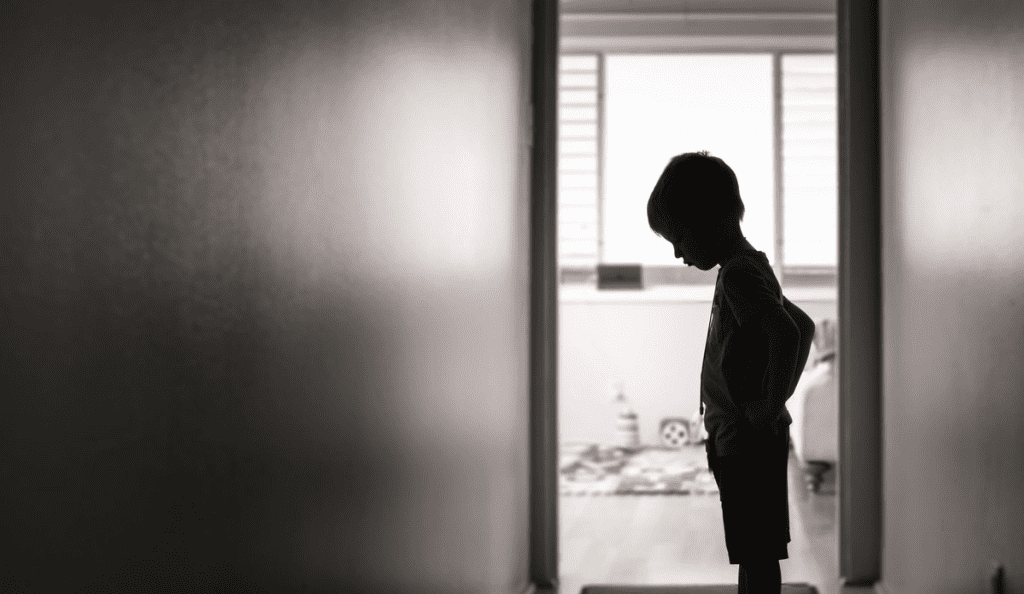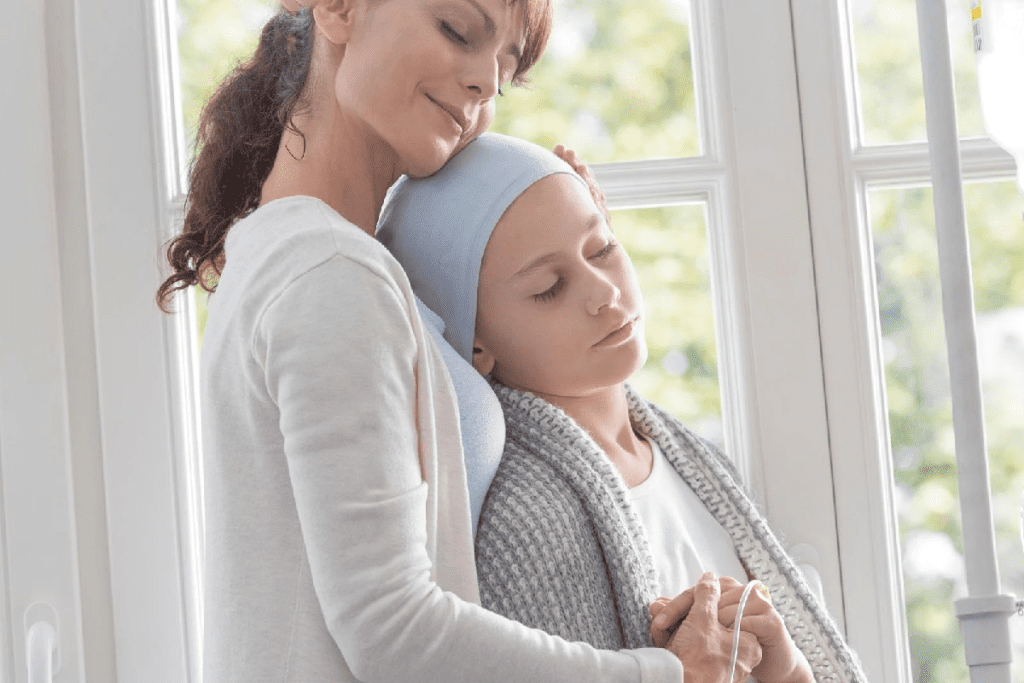Last Updated on October 21, 2025 by mcelik
Leukemia is the most common cancer in kids, making up about 25% of all pediatric cancer cases. The American Cancer Society says it’s a big deal in kids’ cancer.
It’s key to spot the signs of leukemia in kids early. Common blood cancer symptoms in children include getting sick a lot, unexplained bruises or bleeding, and bone pain. Kids might also look pale and feel very tired all the time, which are important signs to watch for when detecting leukemia.
Parents need to know these childhood leukemia signs and symptoms. They can be tricky to spot because they’re similar to minor illnesses in kids.
It’s key to understand childhood leukemia to catch it early and treat it well. Leukemia is a cancer that affects the blood and bone marrow in kids all over the world. It happens when abnormal white blood cells grow too much, causing health problems.

Children can get different types of leukemia, but Acute Lymphoblastic Leukemia (ALL) and Acute Myeloid Leukemia (AML) are the most common. ALL is the biggest one, growing fast. AML is even faster and needs quick action.
In 2021, there were 168,879 new cases of childhood ALL worldwide. This is a 59% jump from 1990. But, thanks to better treatments and early detection, deaths from ALL fell by nearly 67%.
The National Cancer Institute says kids with CML have a 92% chance of living 5 years after diagnosis. This shows how new treatments are helping.
Survival rates have gone up because of:
These numbers show why we need to keep researching and spreading the word about childhood leukemia. We can do better for these kids.
It’s important for parents to know the signs of leukemia. This blood cancer can show itself in different ways. Spotting these symptoms early can help a child get better faster.

Symptoms of blood cancer include feeling tired or weak all the time. Kids with leukemia often say they’re too tired to play. If your child always seems tired or weak, see a doctor.
Fever and night sweats are big warning signs. Fever means the body is fighting something off. Night sweats can also mean leukemia.
Pallor, or looking pale, is a key sign. Leukemia can make kids look pale because it lowers red blood cells. Skin changes like bruising or tiny red spots also mean something’s wrong.
Recent studies show signs of Acute Lymphoblastic Leukemia (ALL) include looking pale and feeling tired. Kids might also bruise easily, have high temperatures, or get sick often. Knowing these signs can help spot problems early.
Skin changes can be an early sign of leukemia in kids. Leukemia, a blood cancer, affects blood cell production. This can lead to noticeable skin changes.
Unexplained bruising is a common sign of leukemia in kids. They might bruise easily or without reason. This happens because leukemia messes with platelet production, which helps blood clot.
Petechiae are small, dark red spots on the skin that can be a sign of leukemia. These spots are tiny hemorrhages in the skin. They happen because of a low platelet count in leukemia.
Petechiae are often seen on the skin where pressure is applied, such as on the legs or areas around tight clothing.
Children with leukemia may have bleeding gums or frequent nosebleeds. These symptoms are due to a low platelet count. They can be scary for kids and parents.
Frequent or prolonged bleeding can be a sign that the body’s ability to form blood clots is compromised.
Spotting these skin signs early is key for diagnosing and treating leukemia in kids. If you see any of these signs, see a doctor right away.
It’s important to know the difference between normal growing pains and pain from leukemia. Bone and joint pain in kids can be a sign of growing pains. But, it can also mean leukemia.
Leukemia can hurt the bones and joints. This happens because leukemia cells build up in these areas, causing pain.
How Leukemia Affects the Bones: Leukemia cells can get into the bone marrow. This leads to bone pain. The bones can get weak and hurt, mainly in the legs, arms, and hips.
Growing pains are common in kids, usually in the legs. But, leukemia pain is often worse and lasts longer. It tends to focus on certain spots.
“The pain from leukemia is different from growing pains,” says a leading pediatric oncologist. “Parents should watch how long and how bad their child’s pain is.”
“Children with leukemia might experience bony pain, limp, or refuse to walk,” according to a medical study.
Here are some ways to tell if it’s leukemia pain or growing pains:
Knowing the signs of leukemia pain can help parents get medical help when needed.
One key sign of leukemia is getting sick often because of a weak immune system. Kids with leukemia might catch infections easily and have trouble shaking them off.
Leukemia messes with the bone marrow, where white blood cells are made. These cells help fight off infections. When leukemia messes with white blood cell production, the immune system gets weaker. This means kids might get sick a lot and have trouble getting better.
Some infection patterns are worrying and might mean leukemia. These include:
Parents should watch for these signs. They could mean there’s a problem with the immune system.
Children with leukemia also heal slowly from minor wounds. This is because leukemia affects platelets and white blood cells. Platelets help blood clot, and white blood cells fight infections. So, even small cuts or scrapes take longer to heal.
Key indicators to watch for include:
Knowing these signs can help parents get medical help early. This could improve the chances for kids with leukemia.
The risk of leukemia in children is influenced by various demographic factors, including gender and age. Understanding these factors is essential for assessing the risk and potentially identifying children who may be at a higher risk of developing leukemia.
Research indicates that boys are more likely to be diagnosed with leukemia than girls, under the age of five. The incidence rate is higher in boys, suggesting a gender-related difference in the susceptibility to leukemia as noted in recent research.
Key statistics on gender differences include:
Age is another critical demographic factor that influences the risk of leukemia in children. The incidence of leukemia varies with age, with certain age groups being more susceptible.
Notable age-related risk patterns include:
A family history of leukemia or other cancers can also impact a child’s risk of developing leukemia. Certain genetic syndromes and familial predispositions may increase the likelihood of leukemia.
Factors related to family history include:
Understanding these demographic factors and risk assessment can help in the early detection and management of leukemia in children.
Early detection is key to better survival rates for kids with leukemia. Quick diagnosis lets doctors start the right treatment early. This greatly boosts the chances of a good outcome.
Liv Hospital shows how important modern medical care and teamwork are in fighting childhood cancer. They set high standards, showing how important it is to work together to treat leukemia.
Parents and caregivers need to watch for early signs of leukemia. Spotting these signs early can lead to better treatment and higher survival rates for kids with this disease.
Early signs of leukemia in children include persistent fatigue and unexplained fever. They also include changes in skin color and unexplained bruising. Other signs are tiny red spots on the skin and bleeding gums or nosebleeds.
Leukemia can cause bone and joint pain by affecting the bone marrow. This leads to swelling, tenderness, and pain in the bones and joints.
Normal growing pains are usually mild and occur in the legs. They often go away on their own. Leukemia-related pain is more severe and persistent. It may be accompanied by fever, fatigue, and bruising.
Children with leukemia get frequent infections because their immune system is weakened. This is due to the disease affecting the production of healthy white blood cells.
Yes, demographic factors like gender, age, and family history can affect the risk of leukemia in children. Boys are more likely to develop leukemia than girls. Certain age groups are also more susceptible.
Symptoms of blood cancer in children include persistent fatigue and unexplained fever. They also include changes in skin color, unexplained bruising, and petechiae. Other symptoms are bleeding gums or nosebleeds, bone and joint pain, and frequent infections.
Parents should watch for persistent or severe symptoms. This includes recurring fevers, unexplained bruising, or persistent fatigue. If they have concerns, they should consult a healthcare professional.
A family history of leukemia or other cancers can increase a child’s risk. Parents with a known family history should be more vigilant about monitoring their child’s health.
Leukemia can be treated and potentially cured. Early detection significantly improves survival rates. Advances in medical treatments have led to better outcomes for children with leukemia.
The most common type of leukemia in children is Acute Lymphoblastic Leukemia (ALL). It accounts for the majority of childhood leukemia cases.
Subscribe to our e-newsletter to stay informed about the latest innovations in the world of health and exclusive offers!